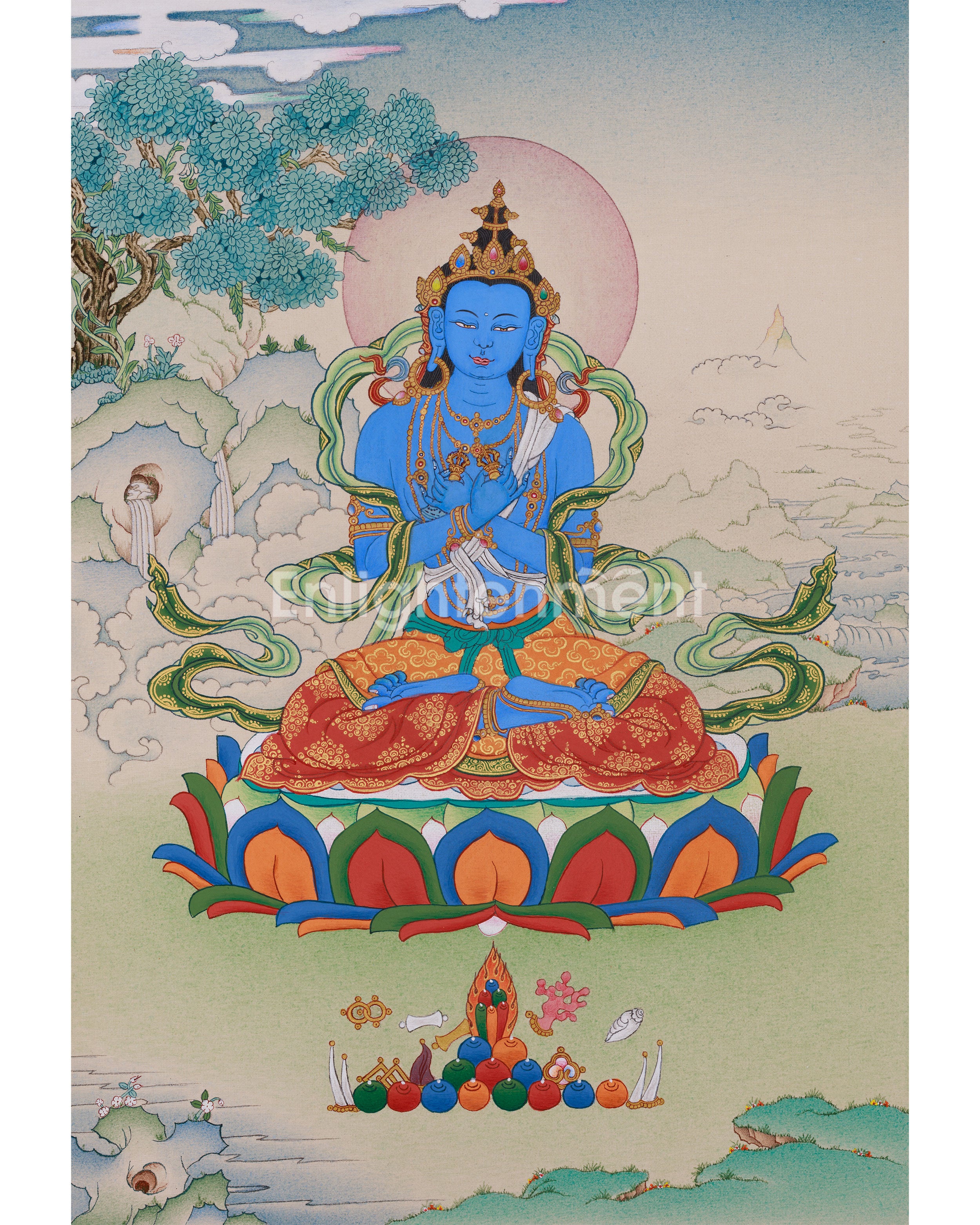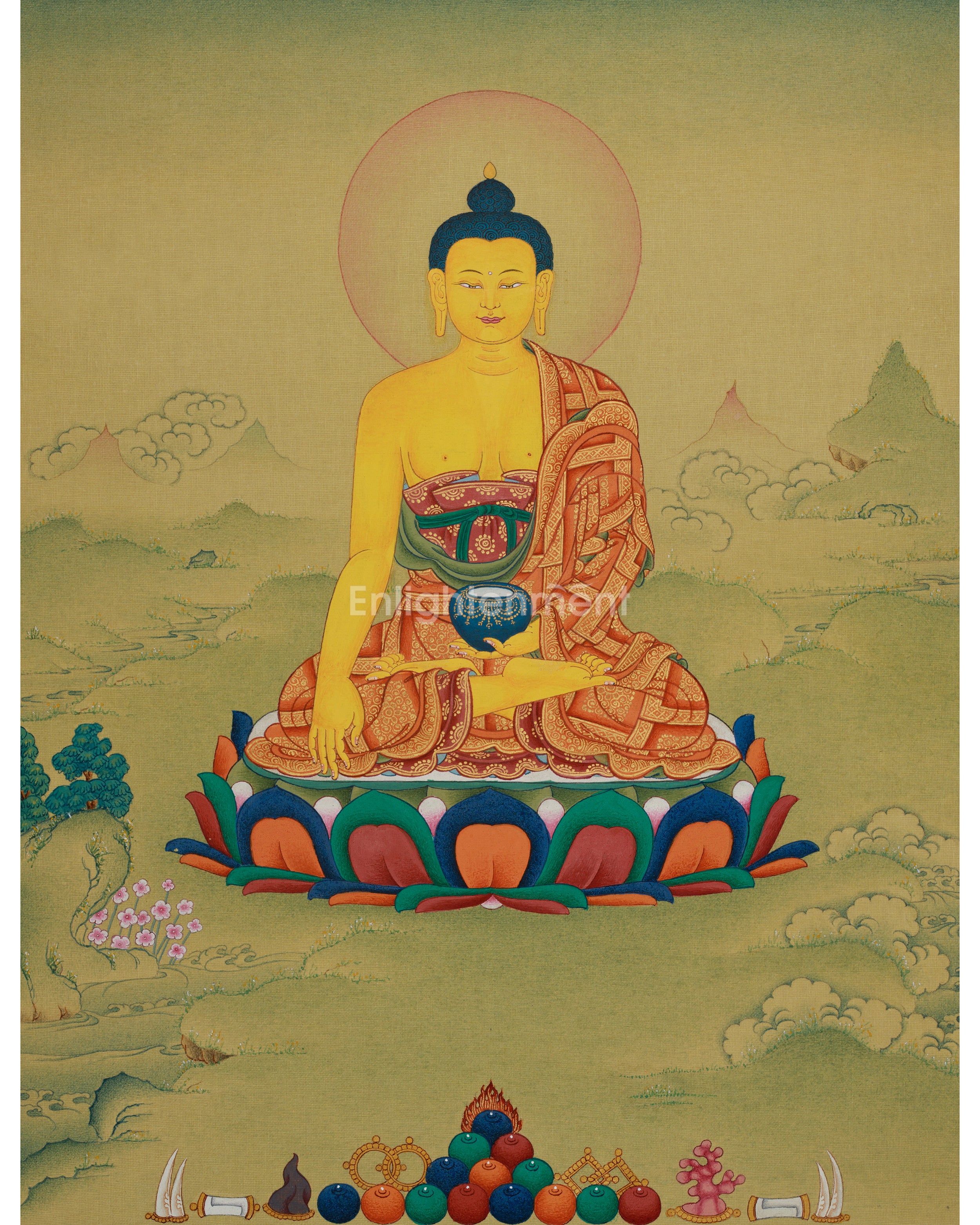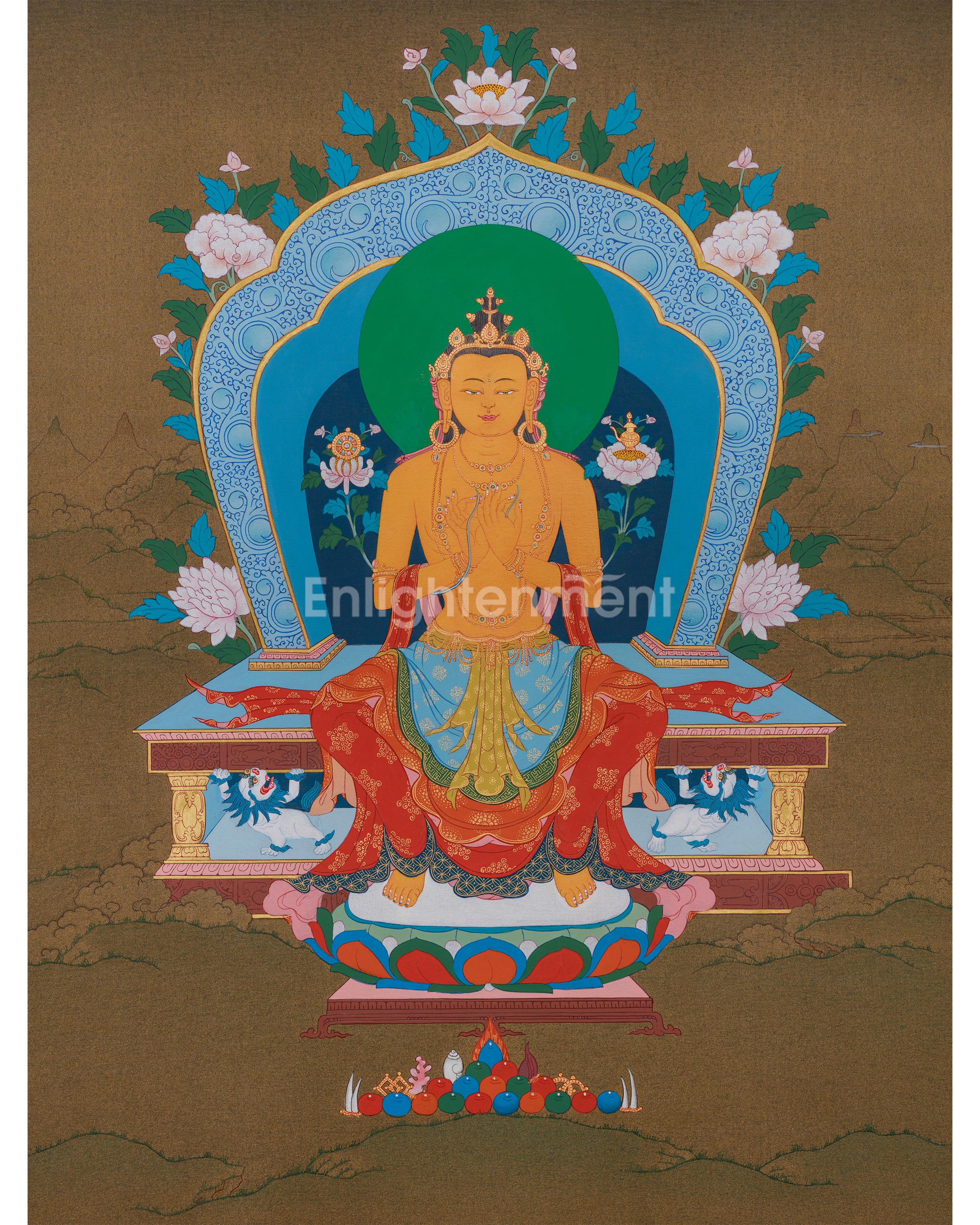Buddha
57 products
Showing 1 - 24 of 57 products
Buddha Thangka Collection – Hand-Painted Vajrayana Buddha Artworks
The meaning of the term "Buddha" is "The Enlightened One" or "The Awakened One."
This curated collection features a diverse selection of authentic Buddha Thangkas, each meticulously hand-painted by master artists at Enlightenment Studio. Whether you're a practitioner or a collector, these sacred images—painted on traditional handmade cotton canvas using natural stone pigments and 24K gold detailing—serve as powerful tools for visualization, meditation, and spiritual offerings.
Buddha Thangka featured in this collection:
Each thangka is iconographically precise, reflecting the traditional lineage teachings and symbolism associated with these enlightened beings. The collection includes a wide range of Buddhas revered in Tibetan Vajrayana Buddhism, such as:
Shakyamuni Buddha – the historical Buddha
Amitabha Buddha – the Buddha of Infinite Light
Medicine Buddha (Bhaisajyaguru) – for healing and well-being
Amitayus Buddha – associated with longevity
Vajradhara and Vajrasattva – primordial Buddhas in Tantra
35 Confession Buddha
5 Dhyani Buddha
Samantabhadra
Maitreya Buddha
Are these Buddha Thangkas suitable for personal altars and monasteries?
Yes, these Vajrayana Buddha thangkas are perfect for personal shrine rooms, temples, and Dharma centers. Many are available in various sizes. They make meaningful spiritual gifts for Buddhists and can also be used as visual aids in group teachings and retreats.
Can I buy original hand-painted Buddha Thangkas online?
Absolutely. Each thangka in this collection is available for direct purchase online, with Free worldwide shipping, secure payment options, and a guarantee of authenticity.
Why choose Enlightenment Thangka for Buddha Thangka Paintings?
As a trusted studio based in Nepal, Enlightenment Thangka is home to some of the most experienced thangka artists, committed to preserving and continuing the sacred Himalayan art tradition. With over two decades of practice, our artists ensure each painting is both spiritually accurate and visually captivating.
























